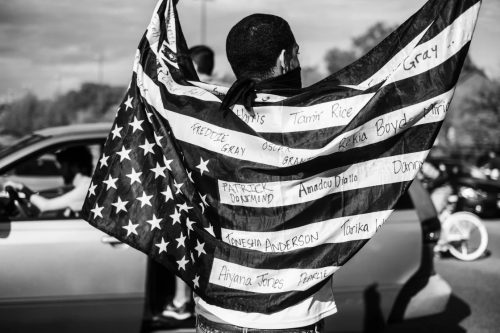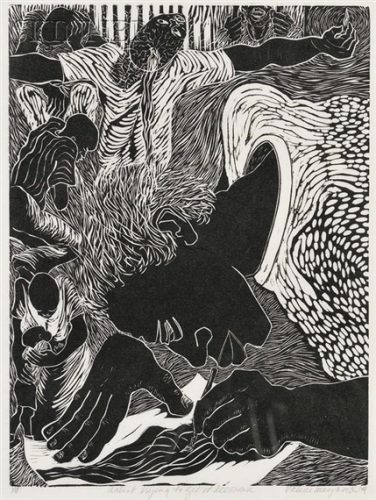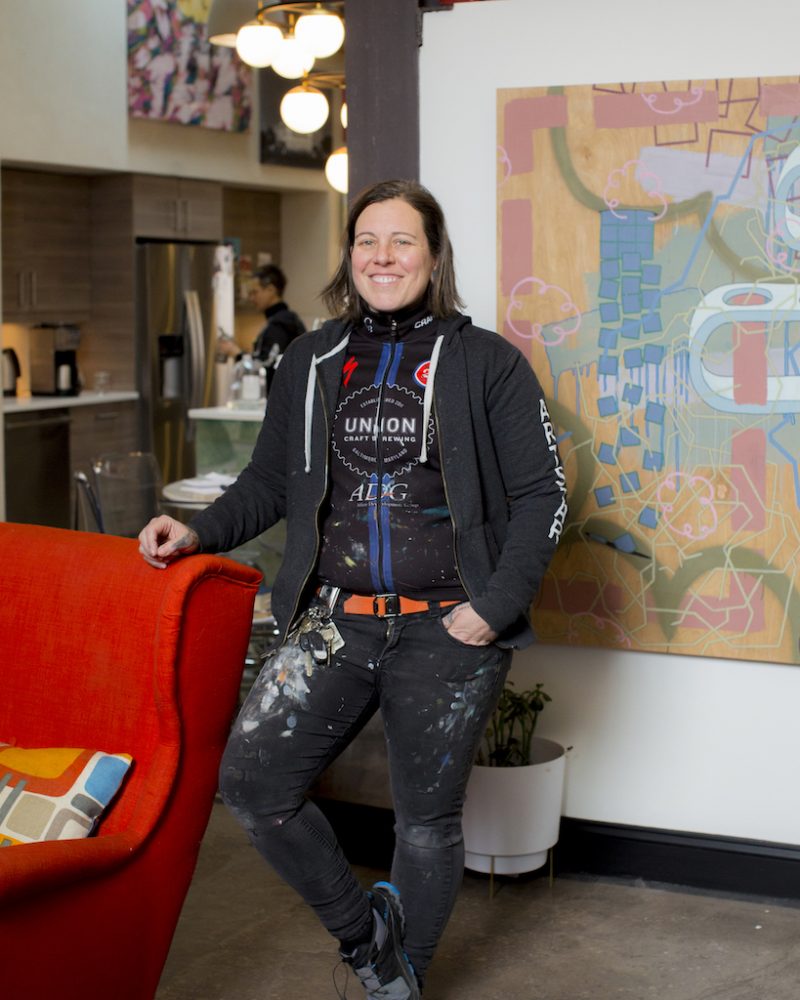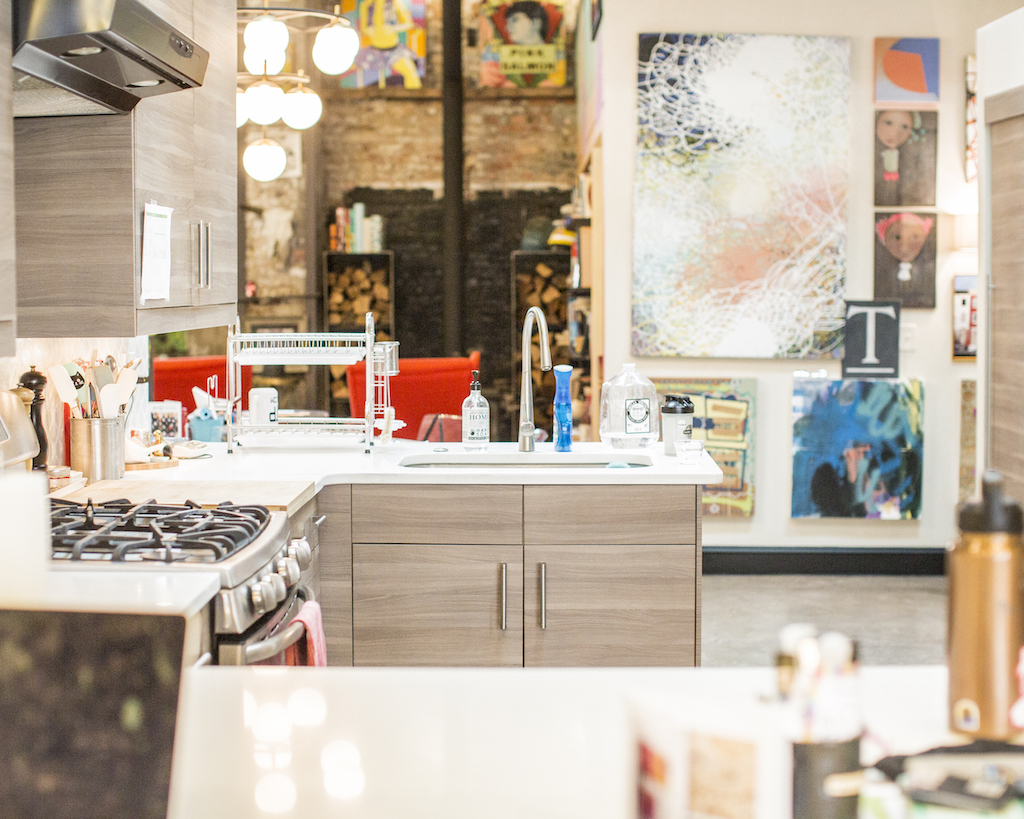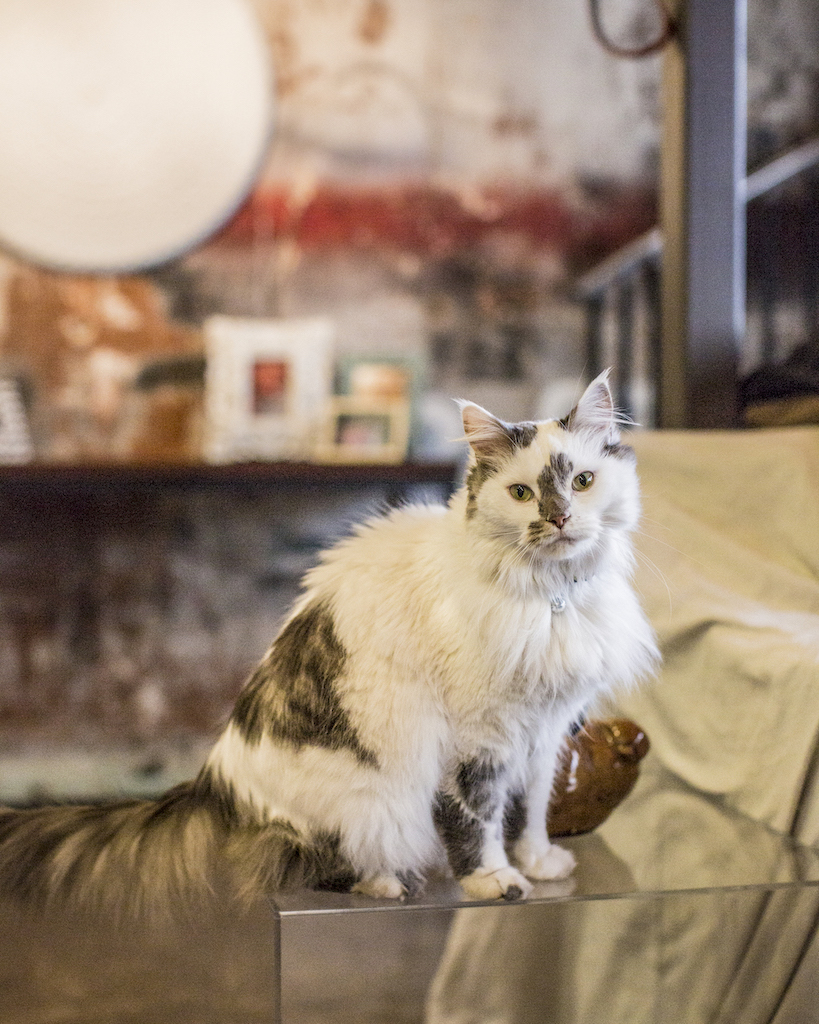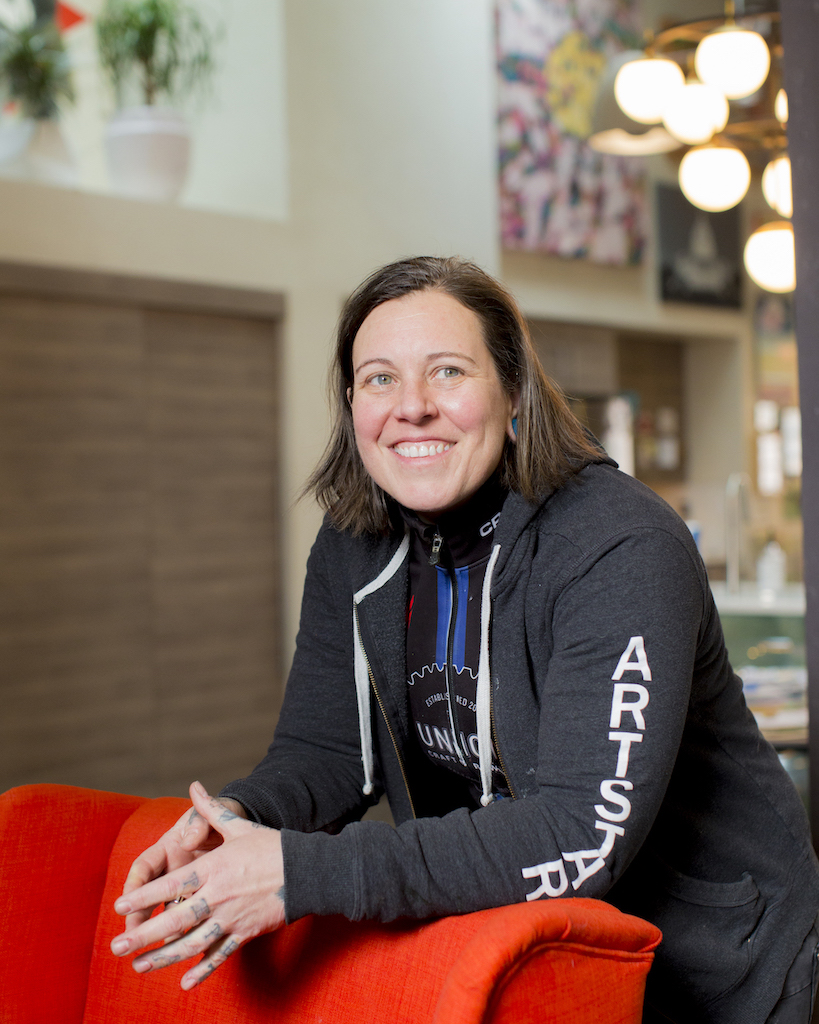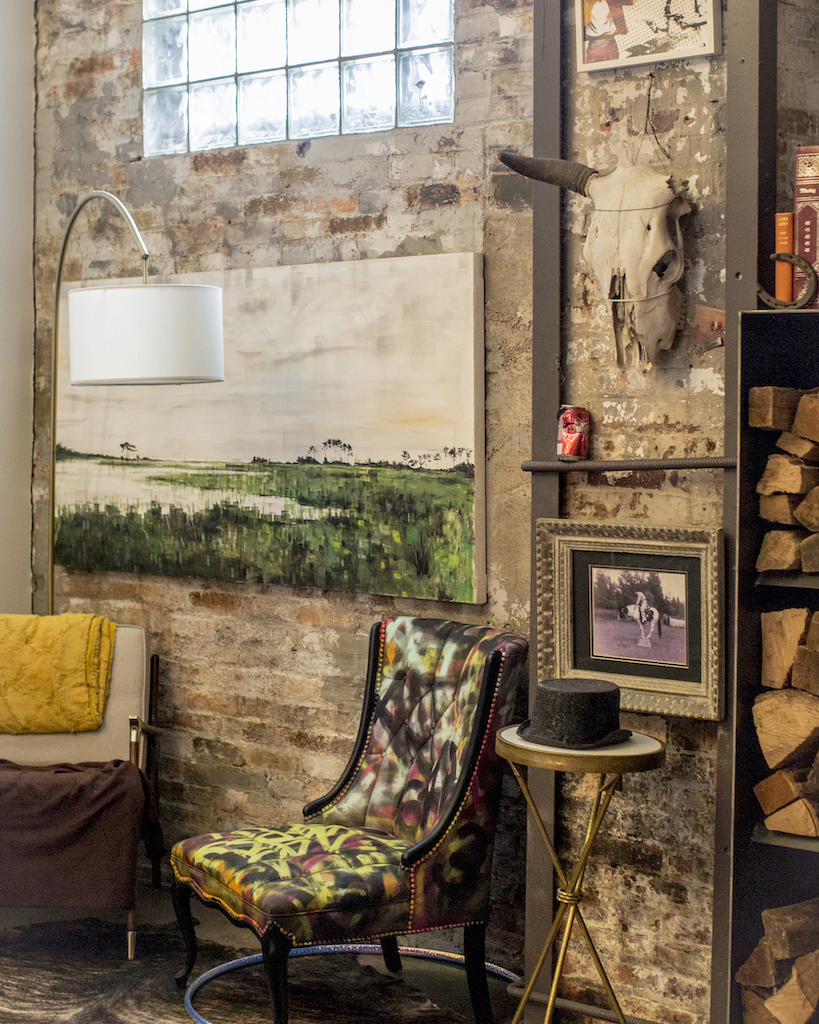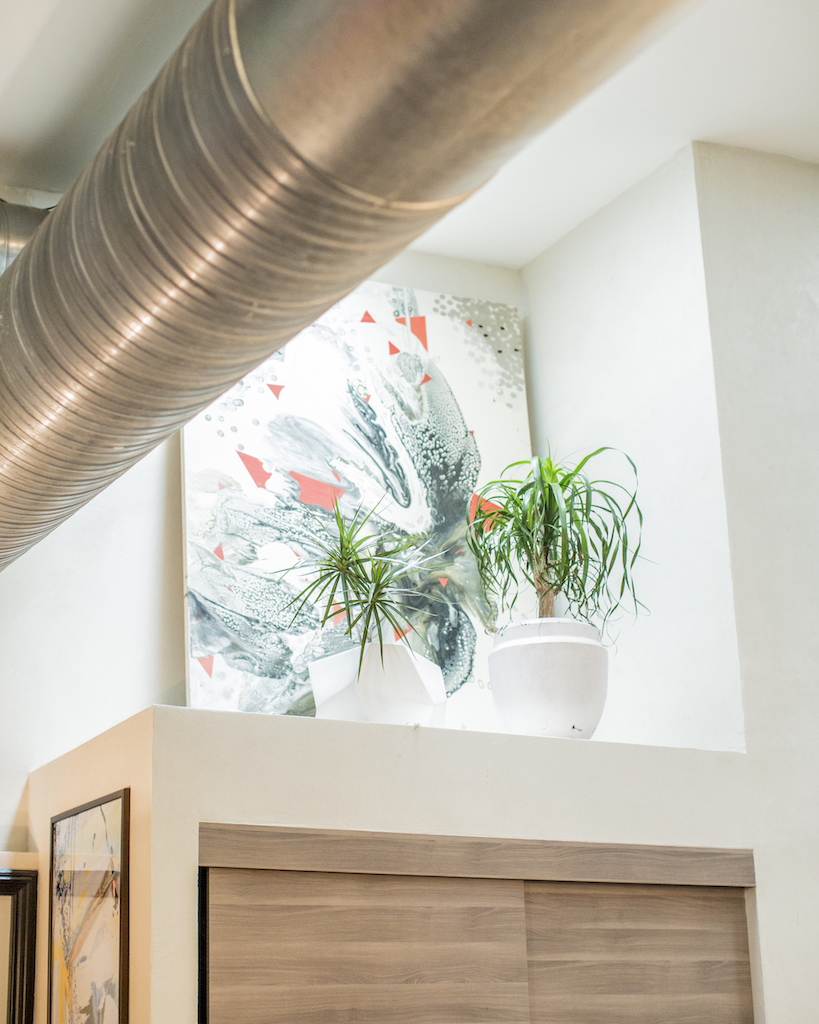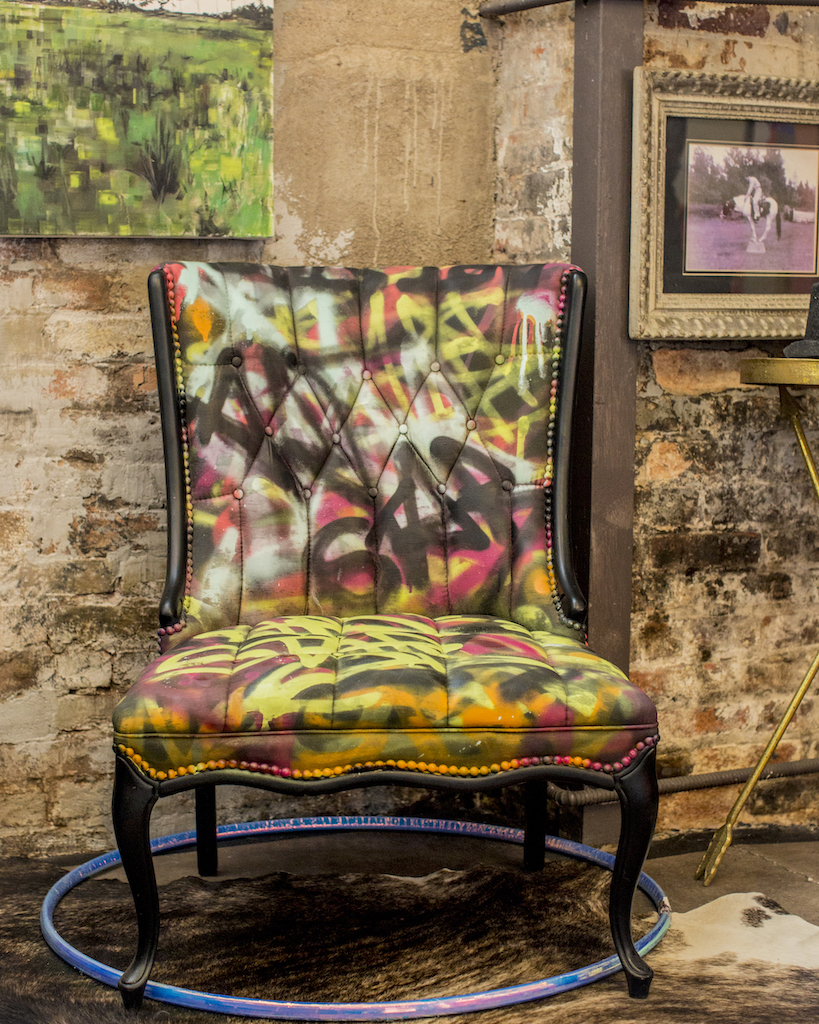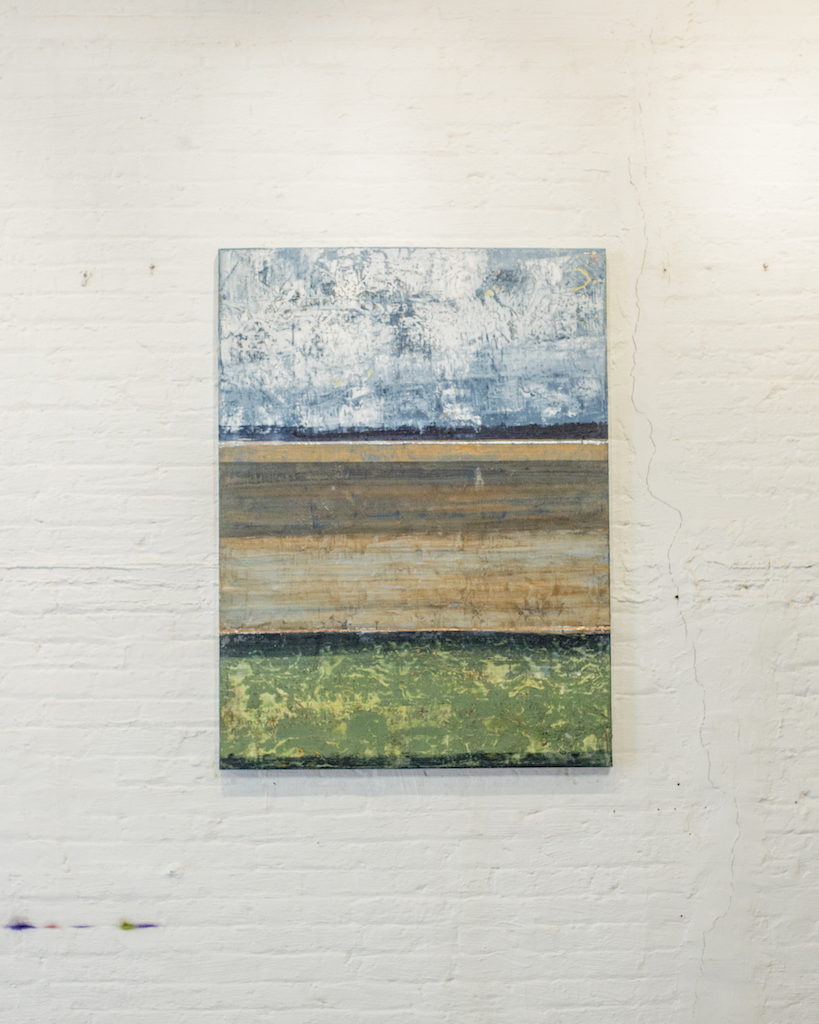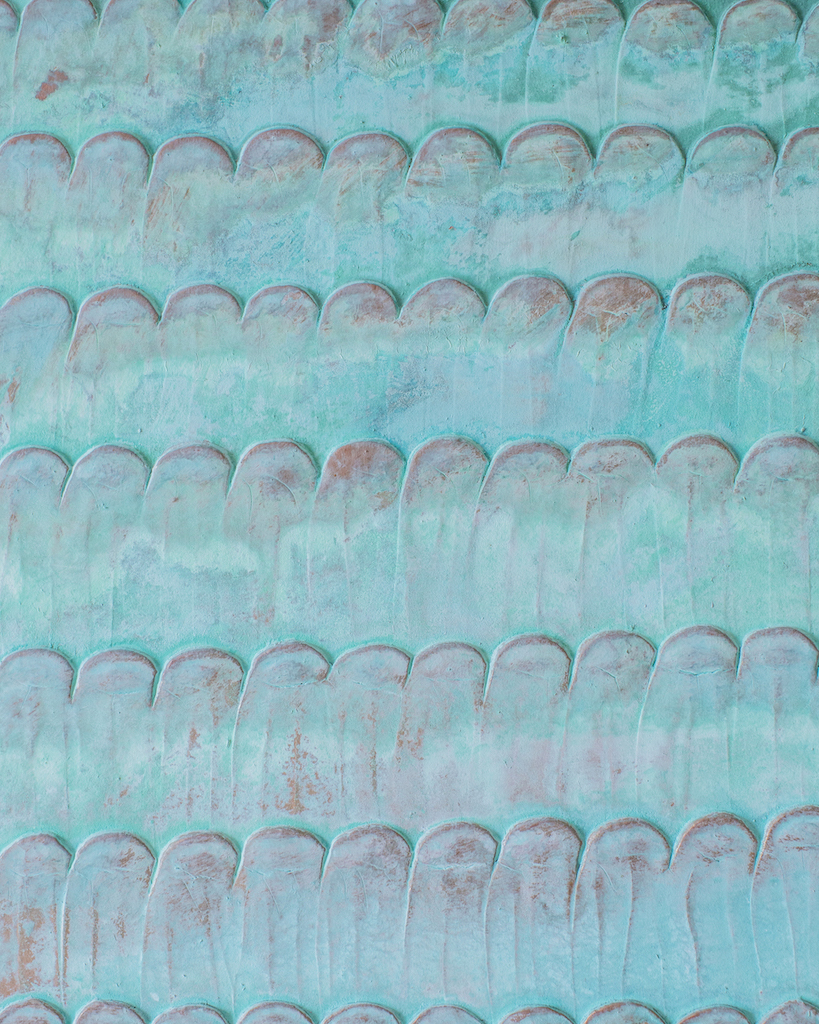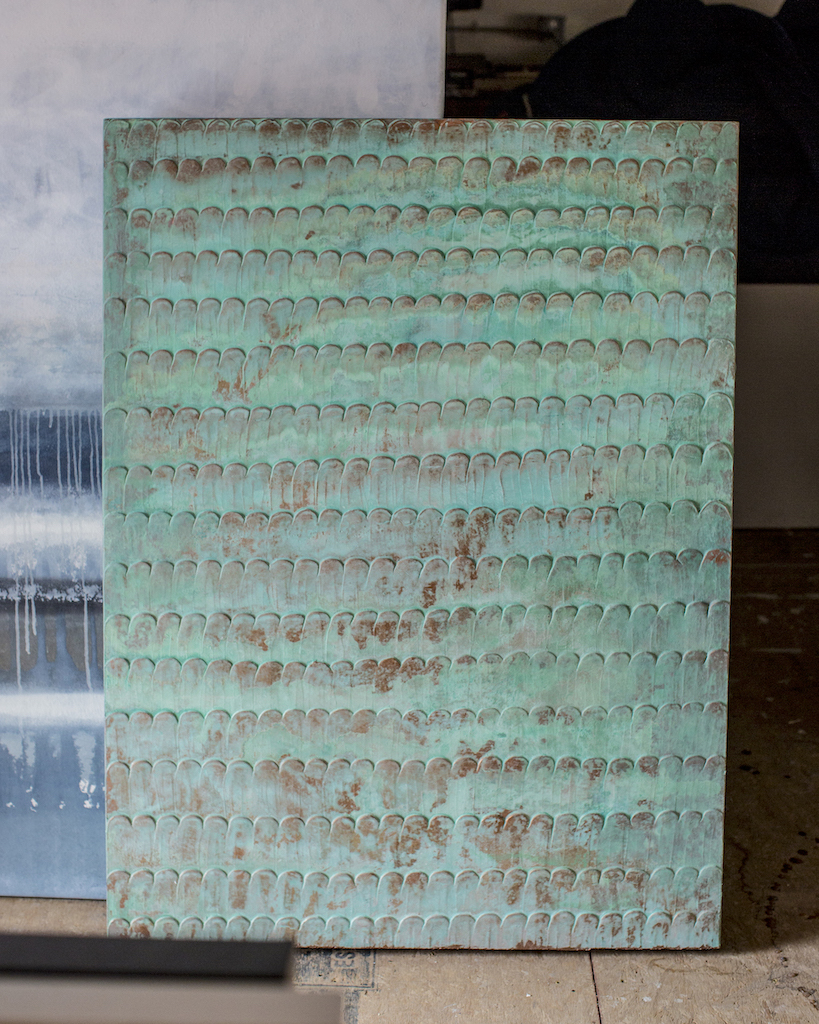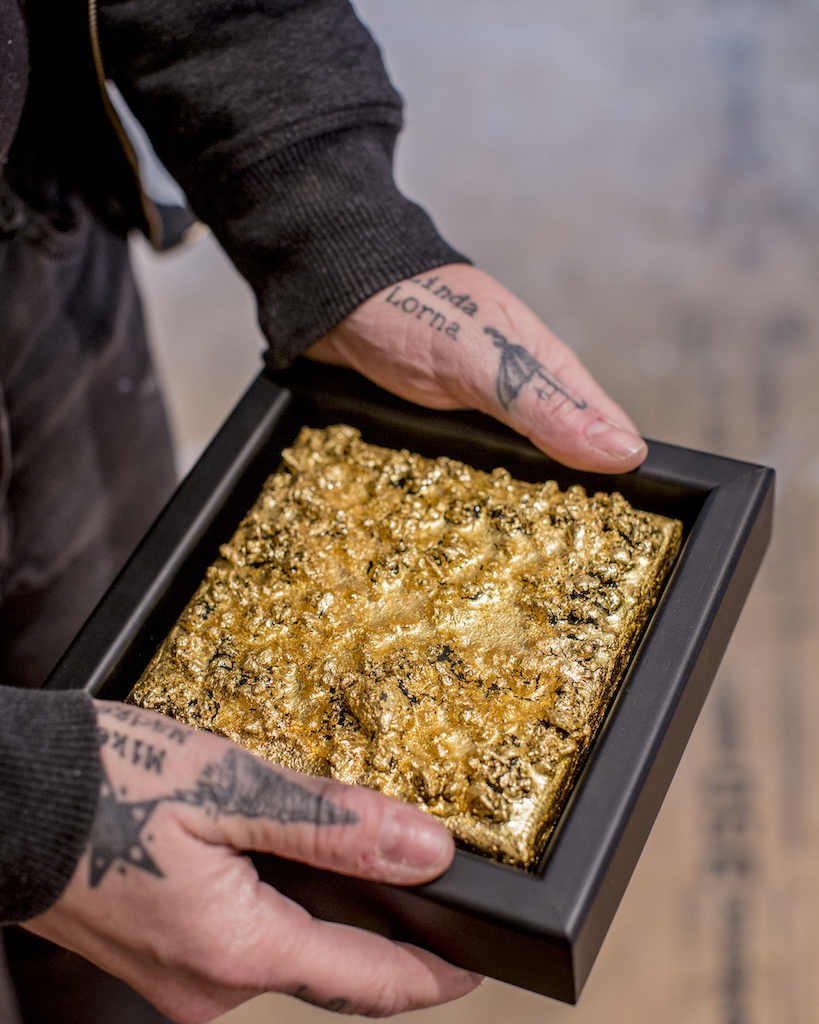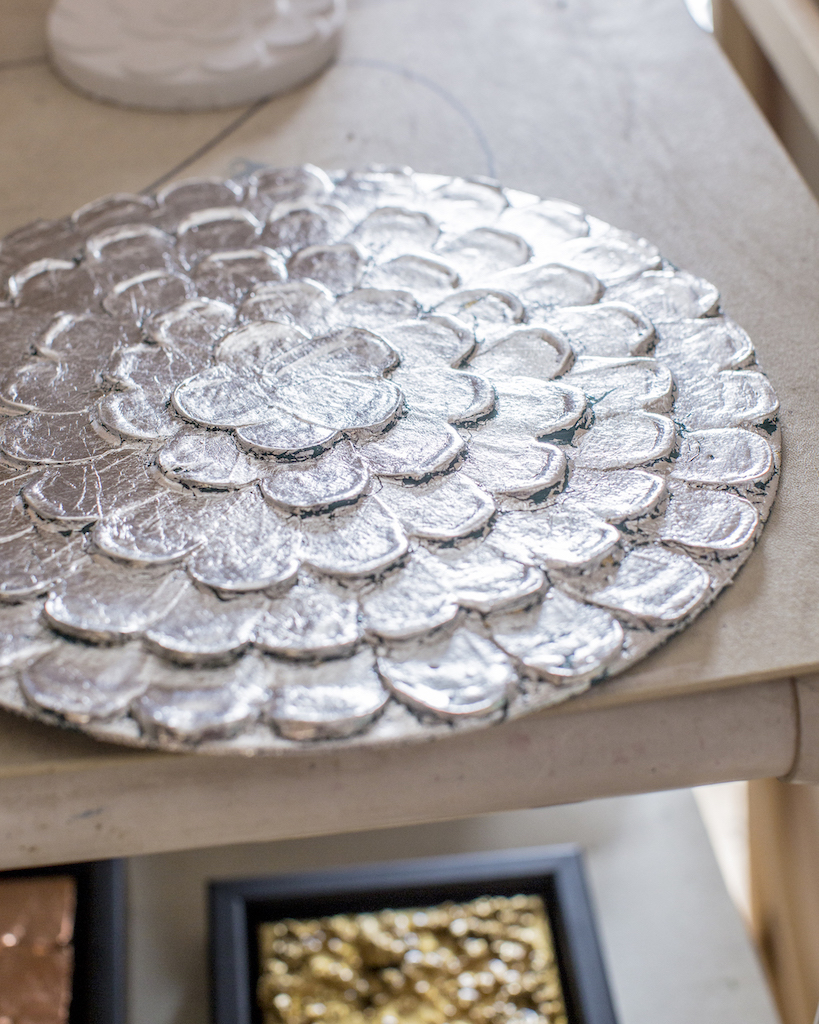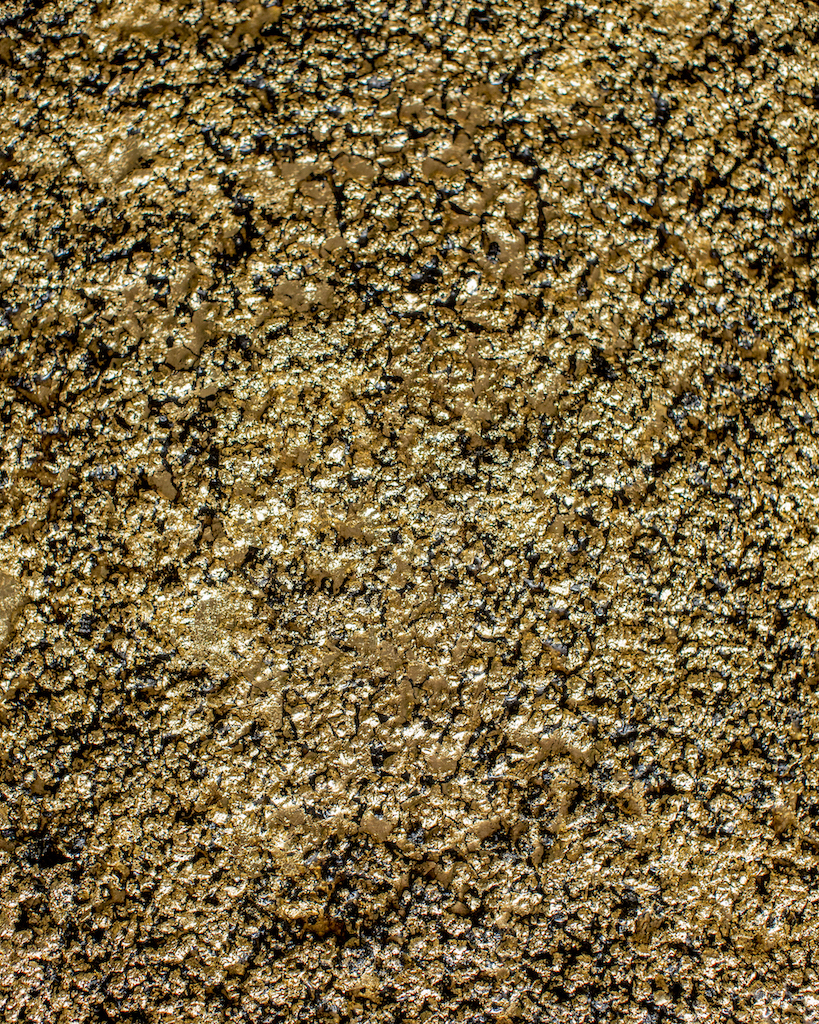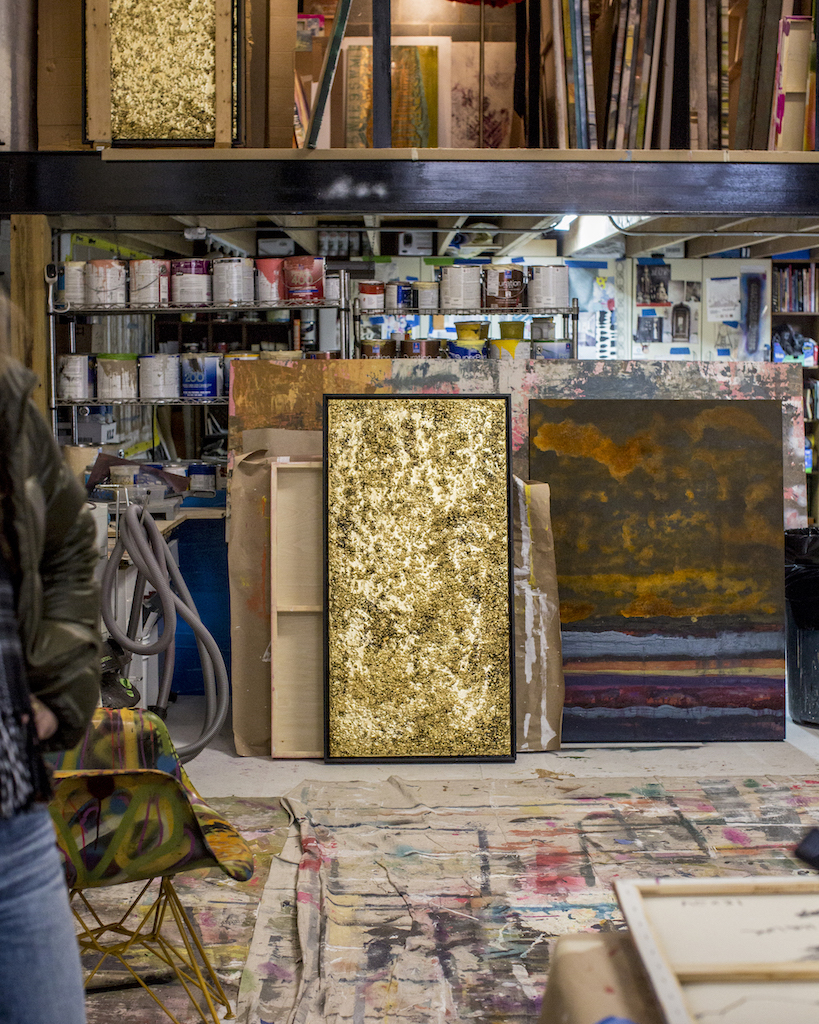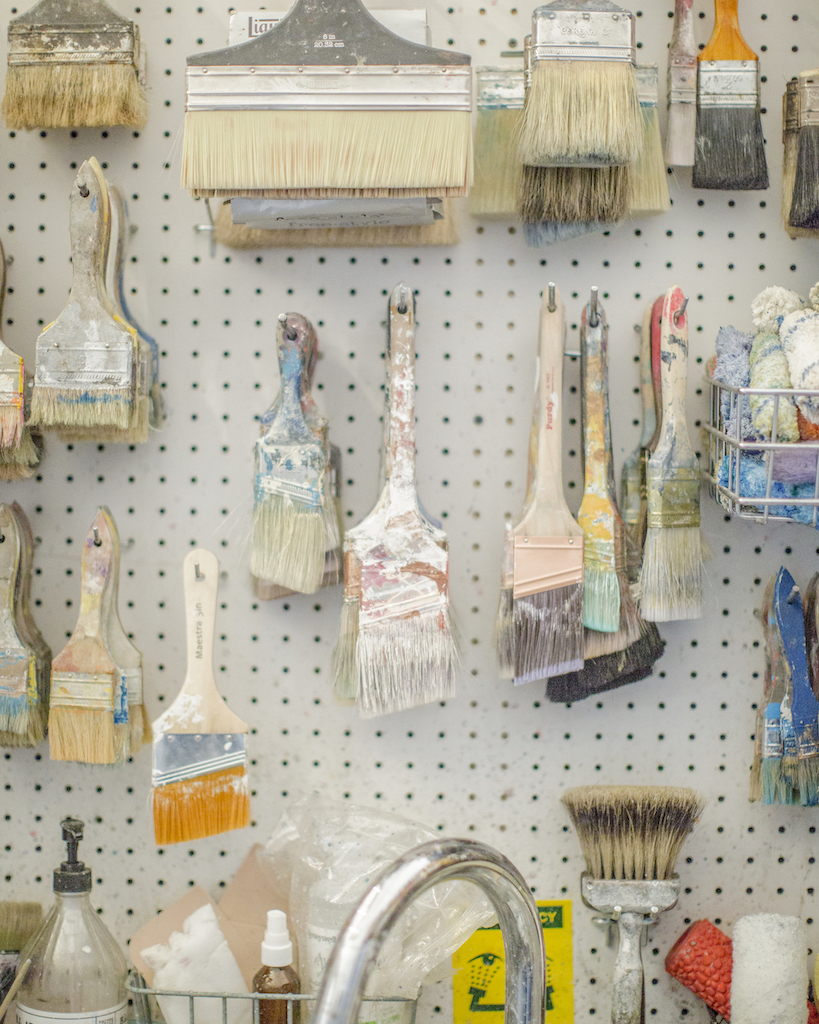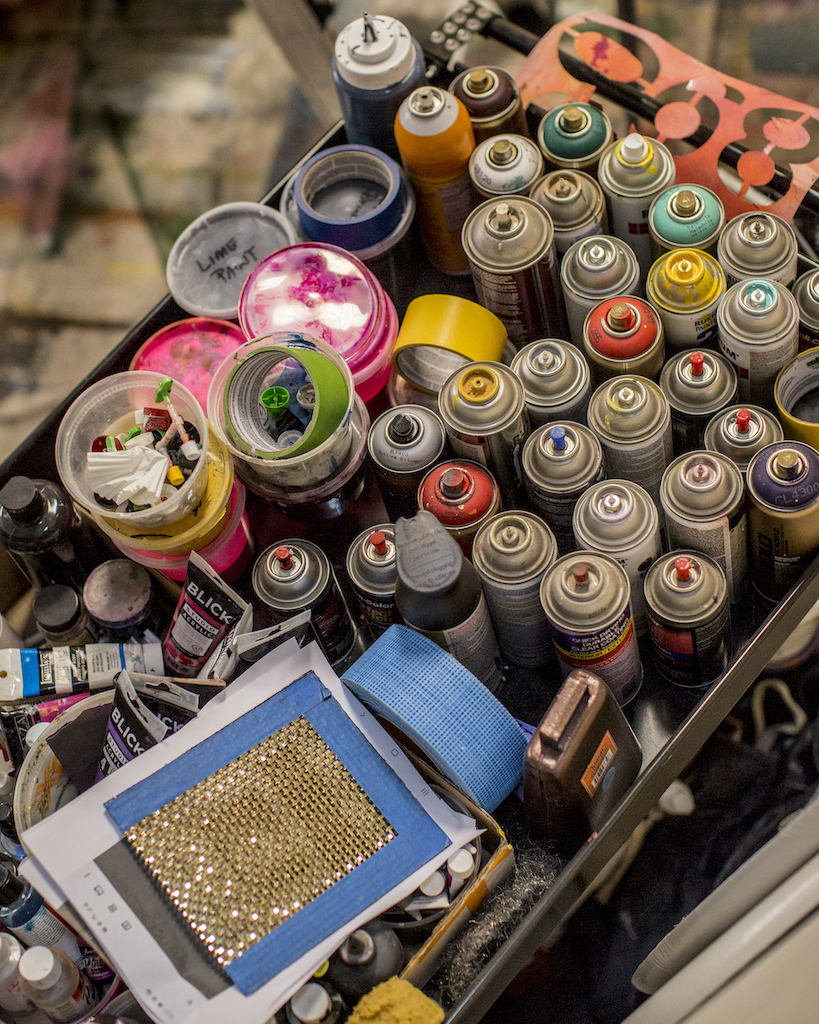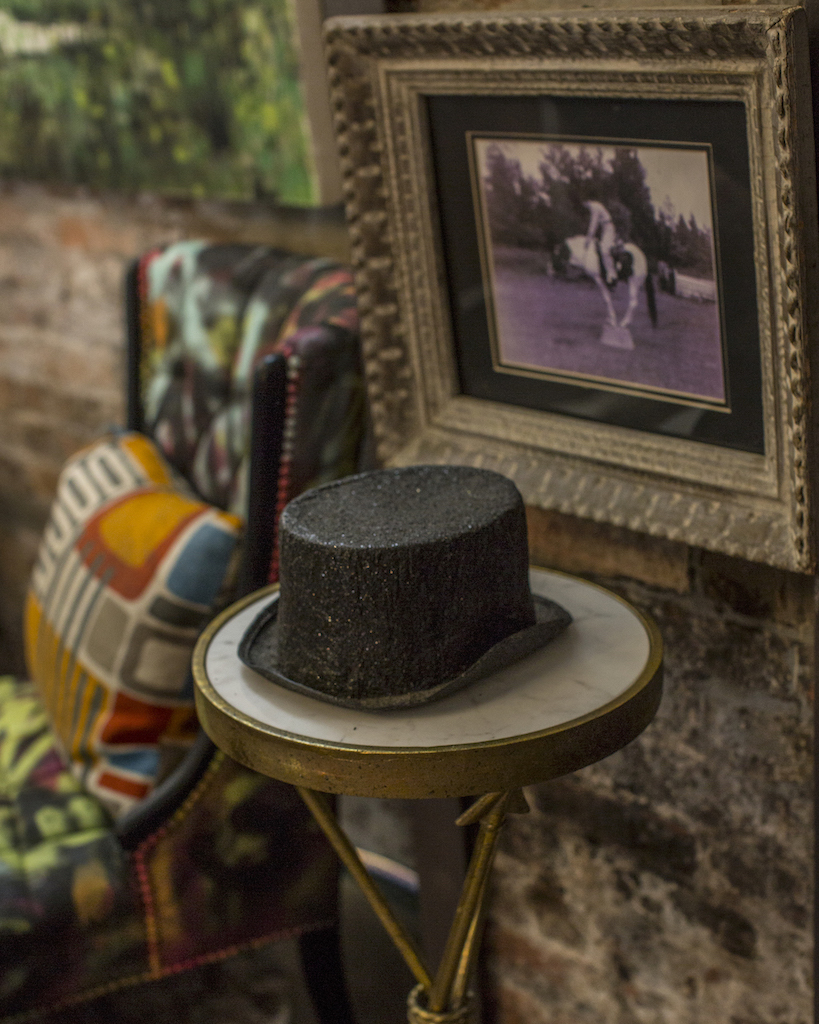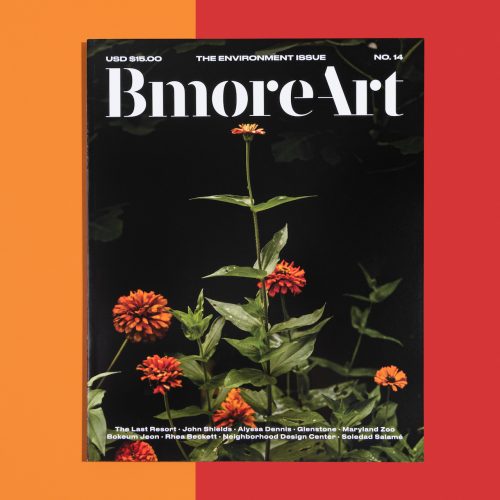Material exploration lies at the heart of all the visual artwork that Walker produces. It’s the emphasis of the Heavy Metal Series, which form grids of large canvases and are literally her heaviest works. Inspired by the grit of the city, Walker applies asphalt onto canvas, forging granular surfaces that brim with activity, and then adds a layer of gold leaf. For the artist, the asphalt represents common building materials used in city streets and the gold leaf is a symbol of opulence. Marrying the two materials represents the duality of living in Baltimore, where the combination of rebellion and courage, style and grit, come together to represent a subjective but ideal version of beauty.
Walker is originally from Evansville, Indiana, also the birthplace of Halston, the world-renowned clothing designer from the 1970s. The 46-year-old describes her childhood self as unsettled and adventurous, a time full of roaming and activity. When her family moved to St. Louis, MO, Walker experienced a city for the very first time and cites the graffiti and abandoned buildings she saw downtown as a formative aesthetic experience, one that both intimidated and entranced her.
After that, Walker’s family moved to North Carolina, where the lifestyle was suburban and proper. “It was homogenized for me there,” she recalls. “I never felt comfortable.” As a restless gay teenager, Walker found friendships in the shadows, developing a serious drinking and drug habit that ended up in multiple rehab stints.
At this point, art became therapy for Walker, who has not had a drink in 28 years. She cites the ceramics and weaving classes offered in rehab as a way to finally quiet and focus her racing brain, giving her a sense of purpose and stillness. She knew that she loved making art and being around artists, but believed that she wasn’t a one because she didn’t know how to draw.
Walker hitchhiked to Baltimore at age 18 and fell in love with the architecture and culture of the city immediately. “I loved being around other creatives in Baltimore and it immediately felt like home,” she says. “I was working in restaurants and surrounded by gay men.” The first piece of art Walker ever made was for a restaurant co-worker named Leroy: a collaged shadowbox full of faux fur and pornography that the recipient kept on display in the restaurant.
The piece earned Walker accolades and encouraged her to make more work, and her subsequent employment at artsy food venues like Sascha’s and Louie’s Bookstore Cafe on Charles Street helped her to make new artist friends, many who continue to inspire her.
